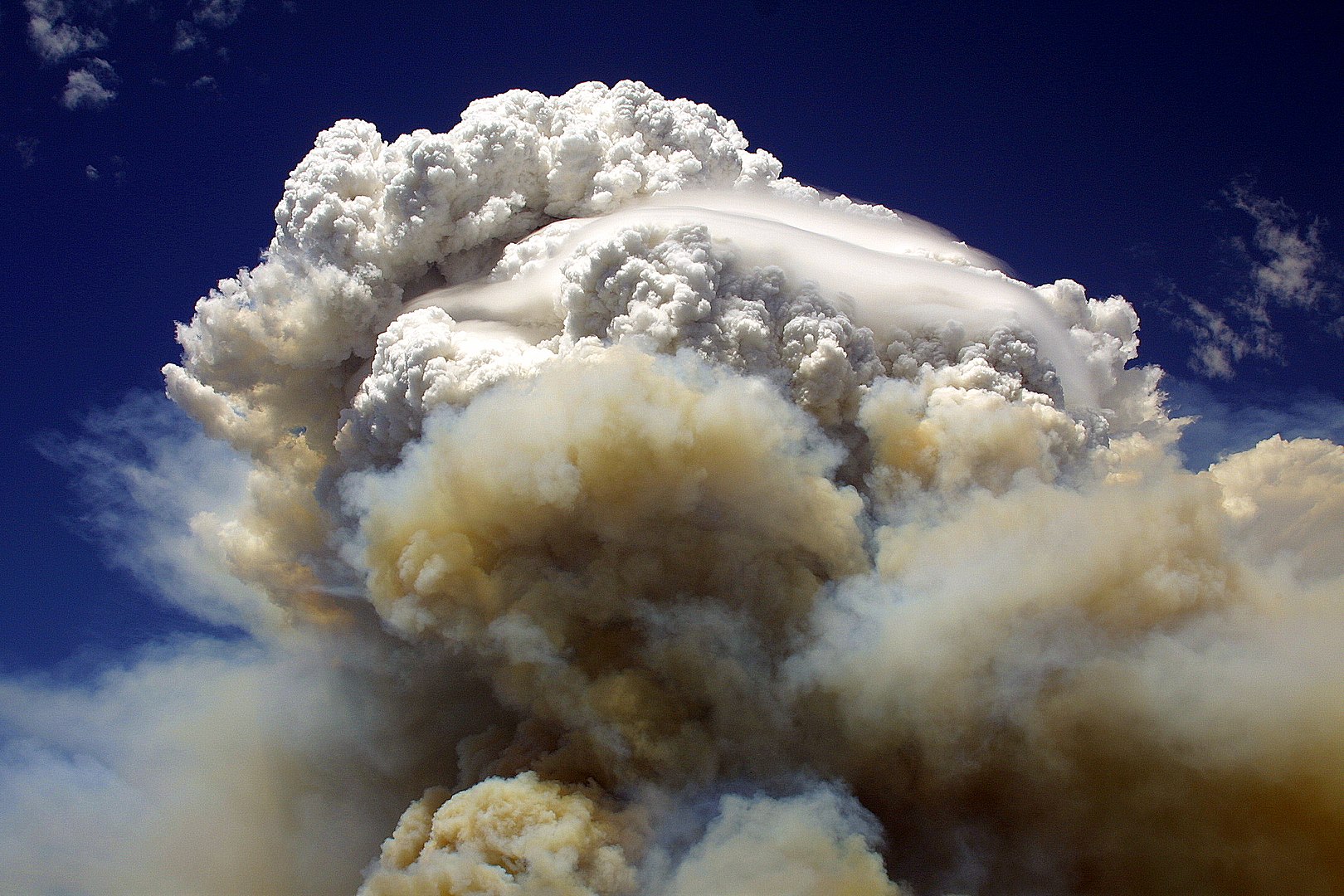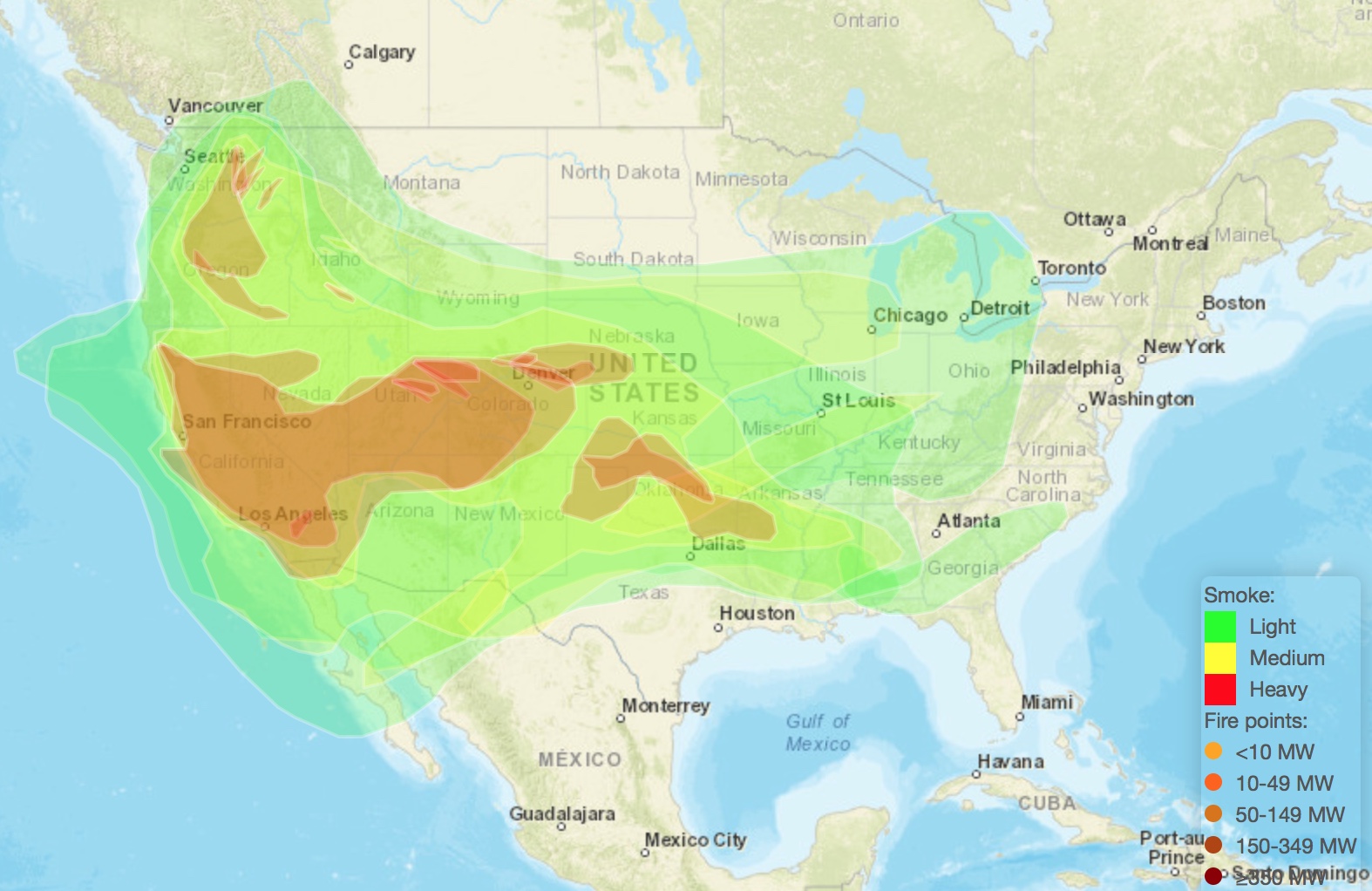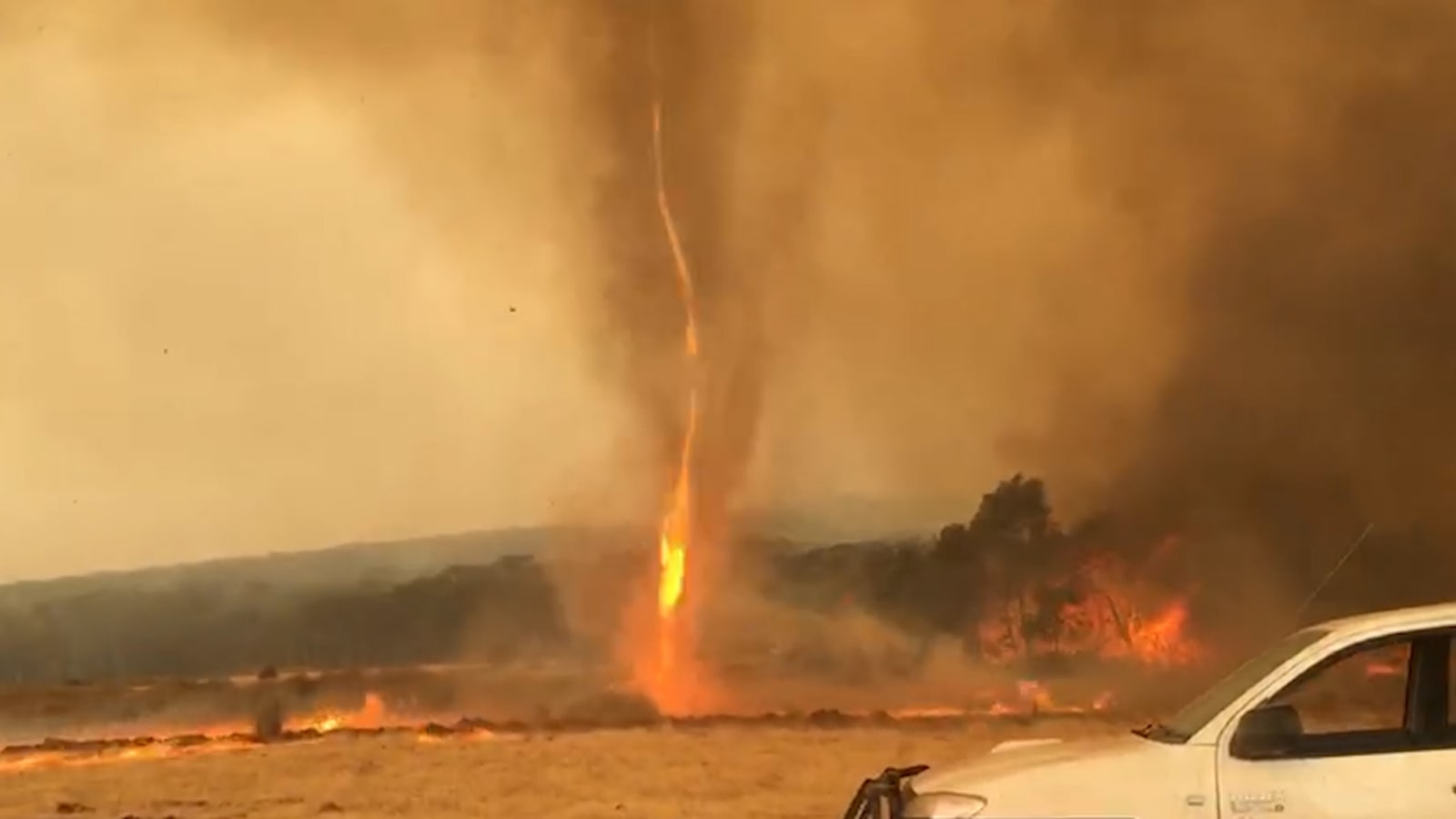
New smoke forecasting models are being developed in response to wildfires intensifying across the western United States. The NOAA Smoke Forecasting System is good for predicting smoke movement across the US, however not as effective on a smaller scale.
Climate change is driving the intensification of wildfires worldwide. Increased temperatures dry vegetation faster and extreme heat can make fires explosive. Stronger thunderstorms increase the likelihood of lightning triggering a fire. This summer has shown us just how intense a wildfire can be. 2020 is the worst fire season on record for California with over 7,400 fires burning over 2.3 million acres as of September 7th.

Logan Mitchell, assistant research professor in atmospheric sciences at the University of Utah, studies emissions and greenhouse gasses. According to Mitchell, we should expect more smokey days in the future due to more intense wildfires. As most people in the west have experienced, even if there is no wildfire nearby it can get very smokey. The smoke can even make it to the eastern US when many intense fires burn at the same time. When smoke enters a region it poses health risks to everyone outdoors. If there are fires nearby the smoke can be unbearable for days on end.
“We know theoretically that this stuff is possible. But these fires are just getting so so large that we’re seeing this extreme kind of fire behavior.”
– Logan Mitchell
When a fire rages out of control they create their own weather systems. Phenomena such as “fire tornadoes” and “fire clouds” can occur under extreme conditions. These unique weather patterns are terrifyingly destructive and deadly for firefighters. The erratic and intense fires are the ones that Mitchell hopes to tame with new forecasting models. Those models would give wildland firefighters more vital information to stay as safe as one can be battling an inferno.
